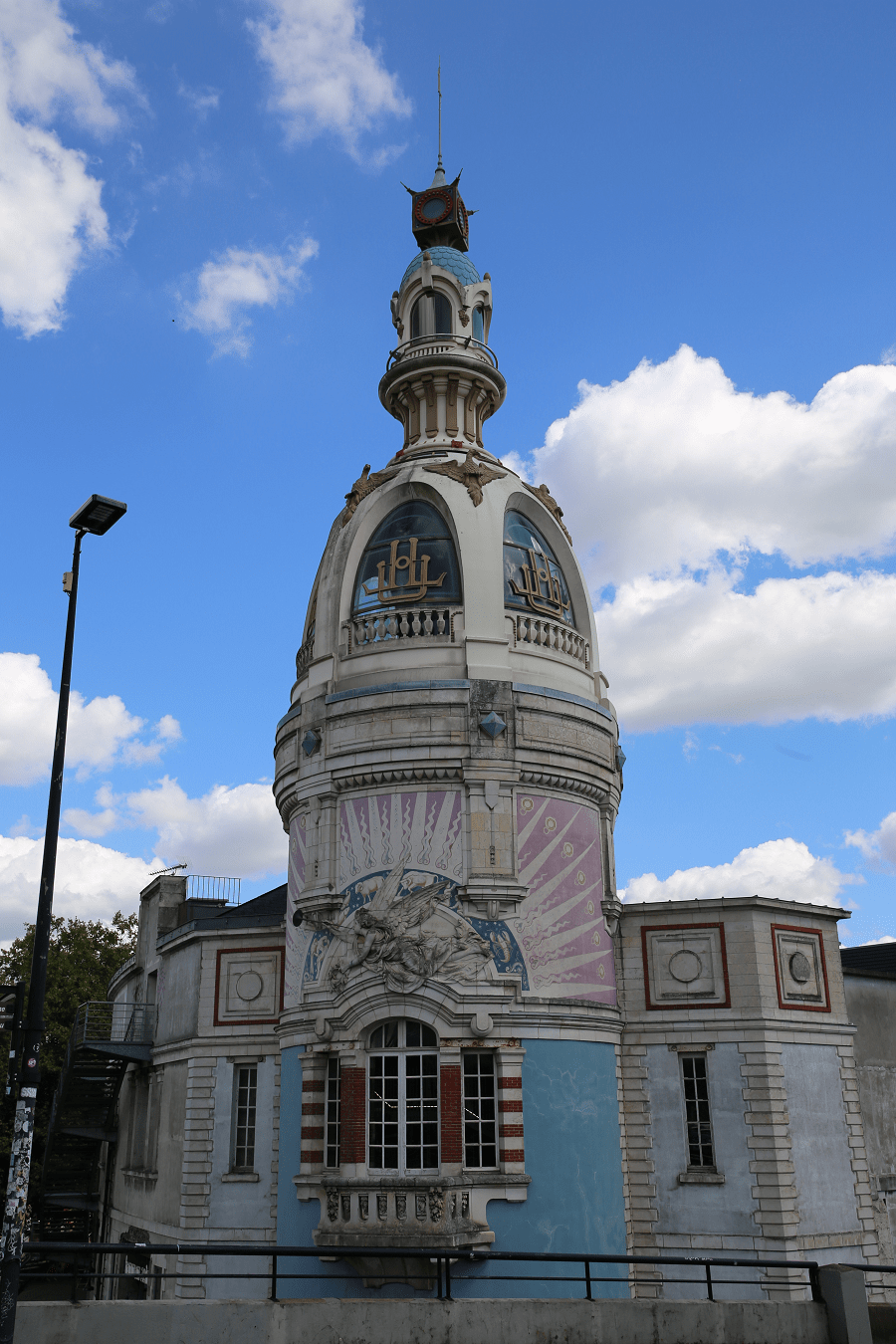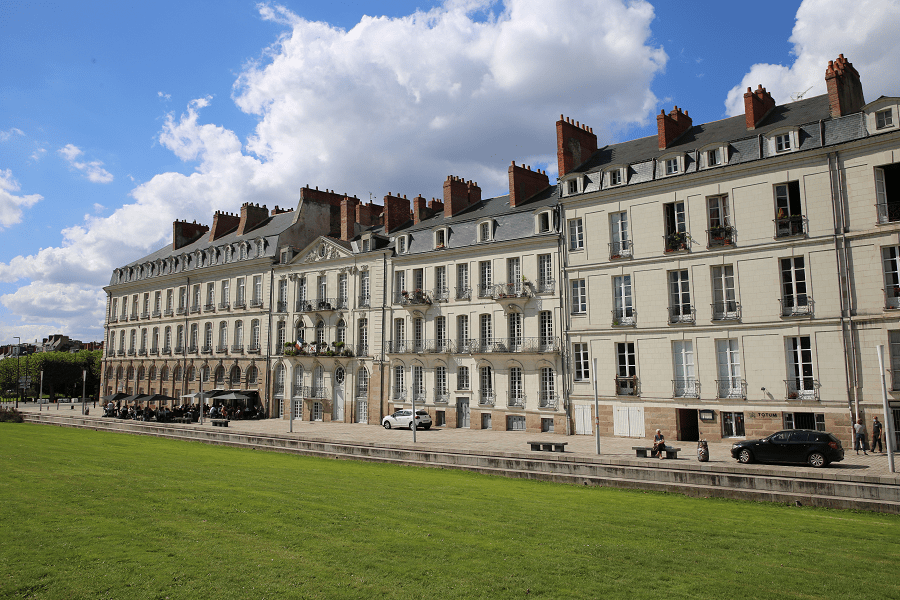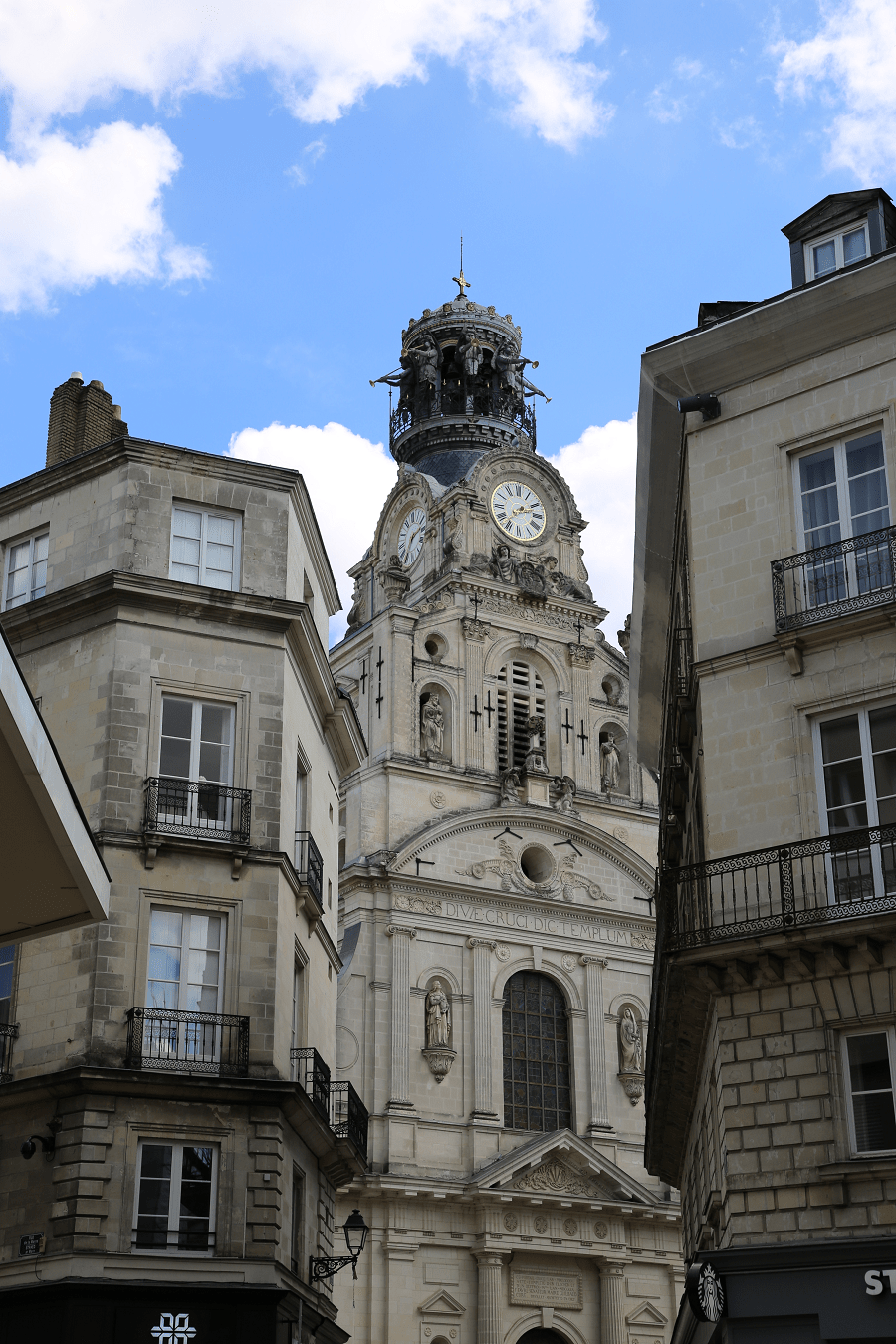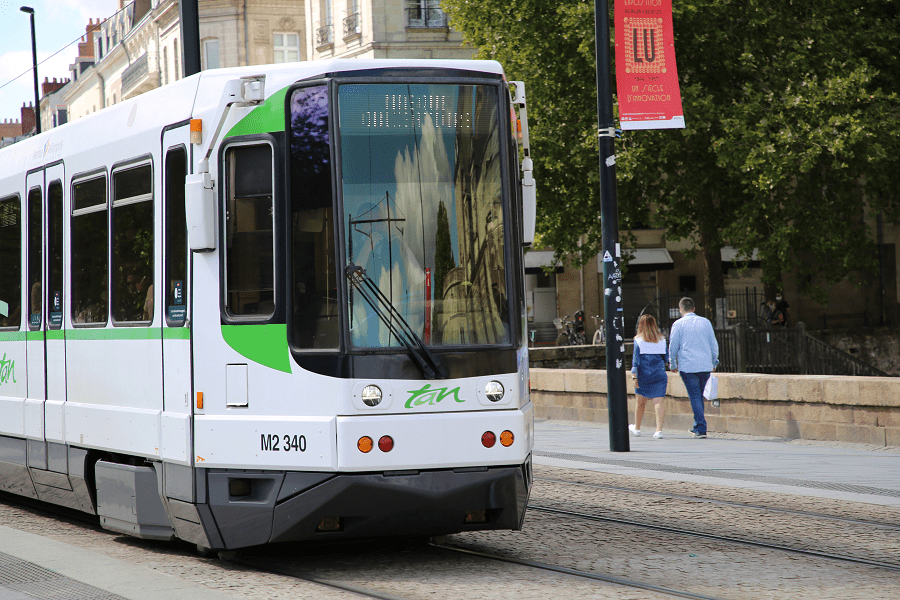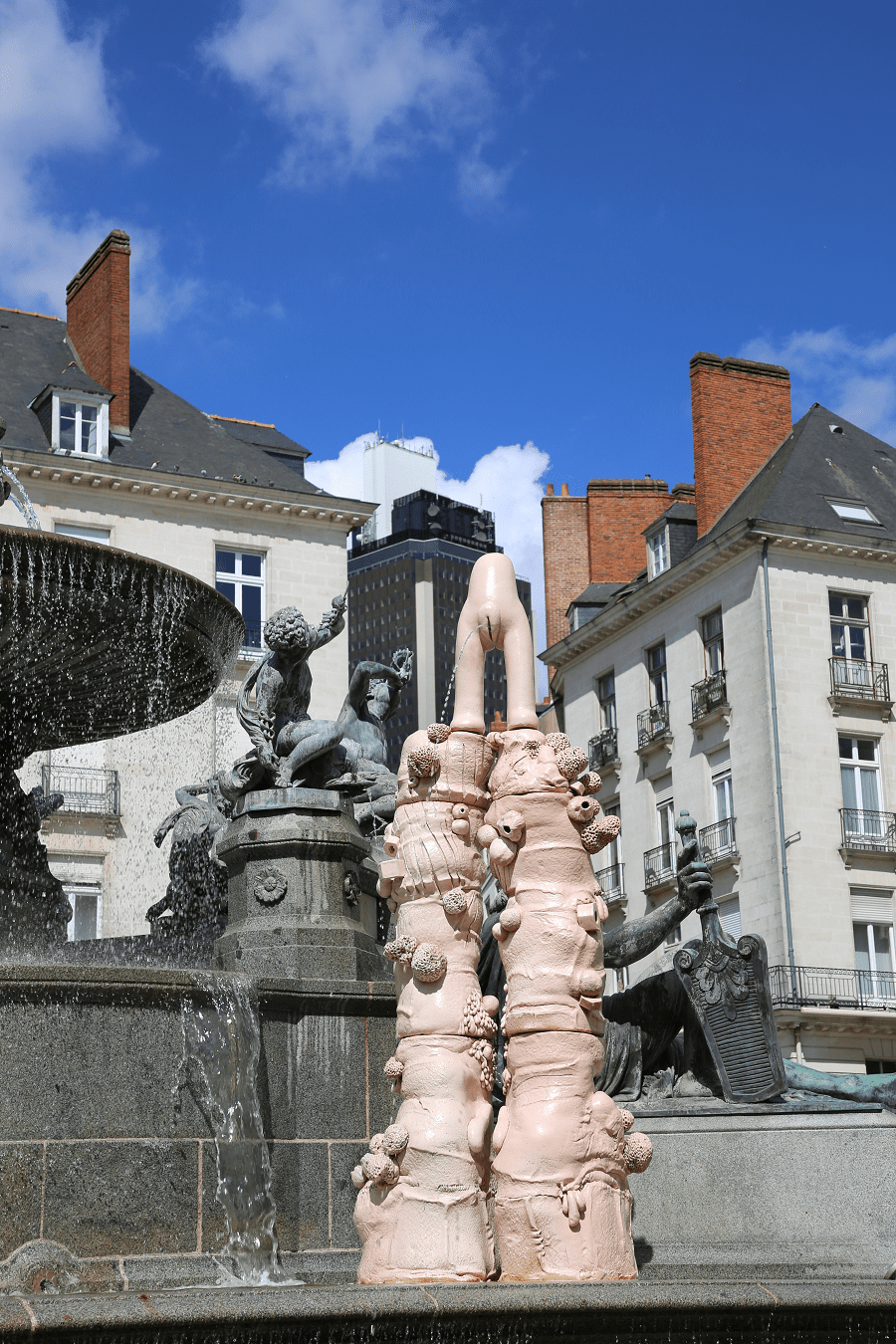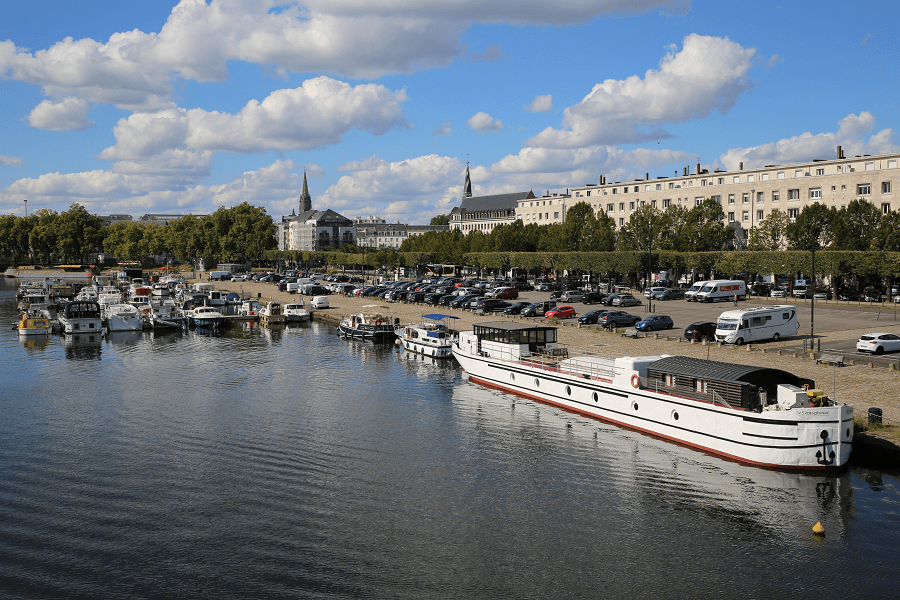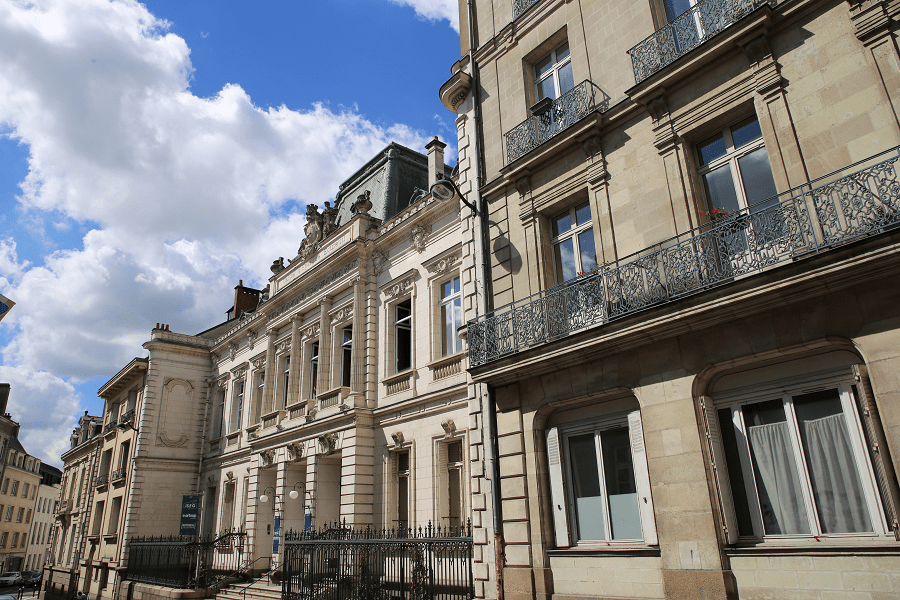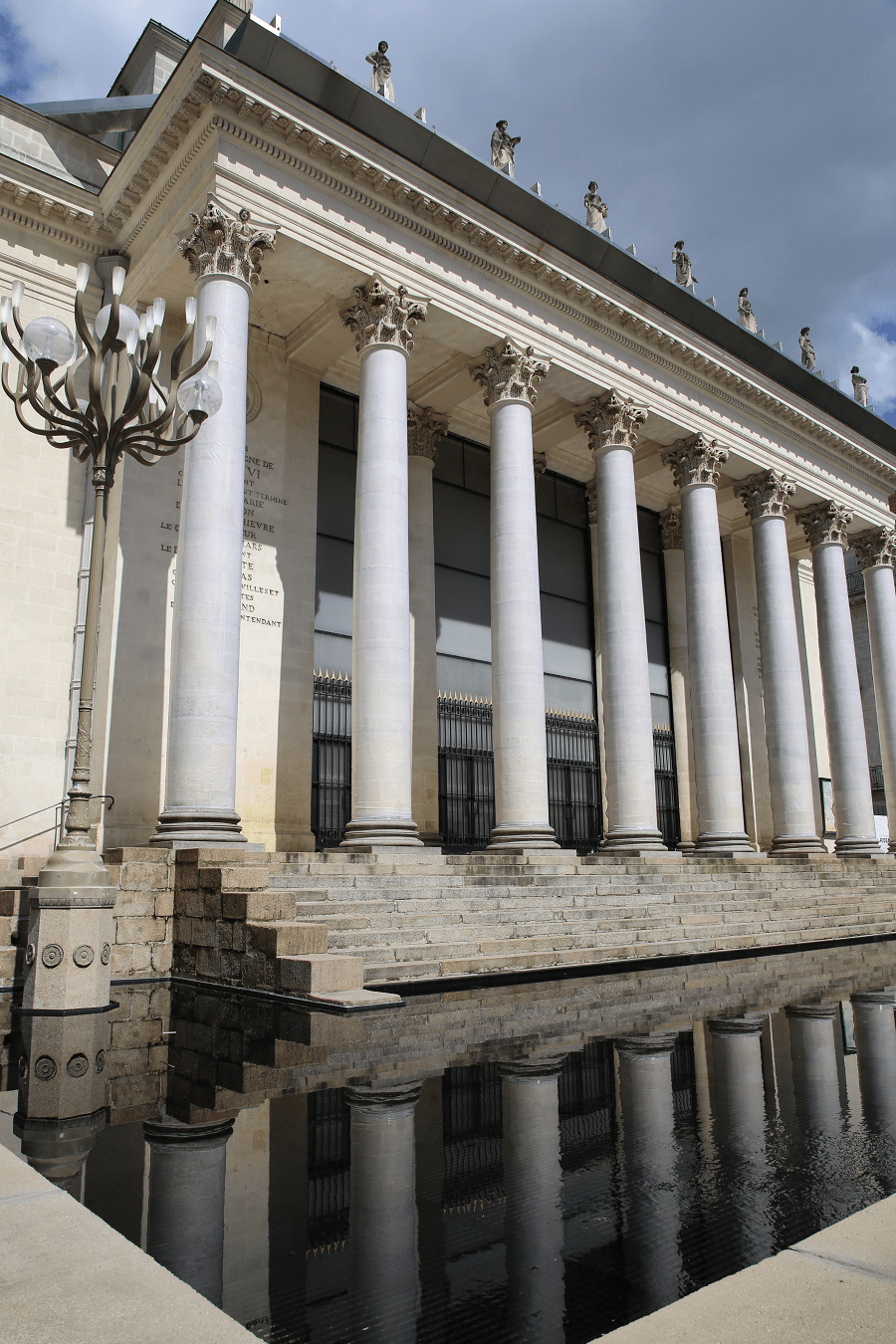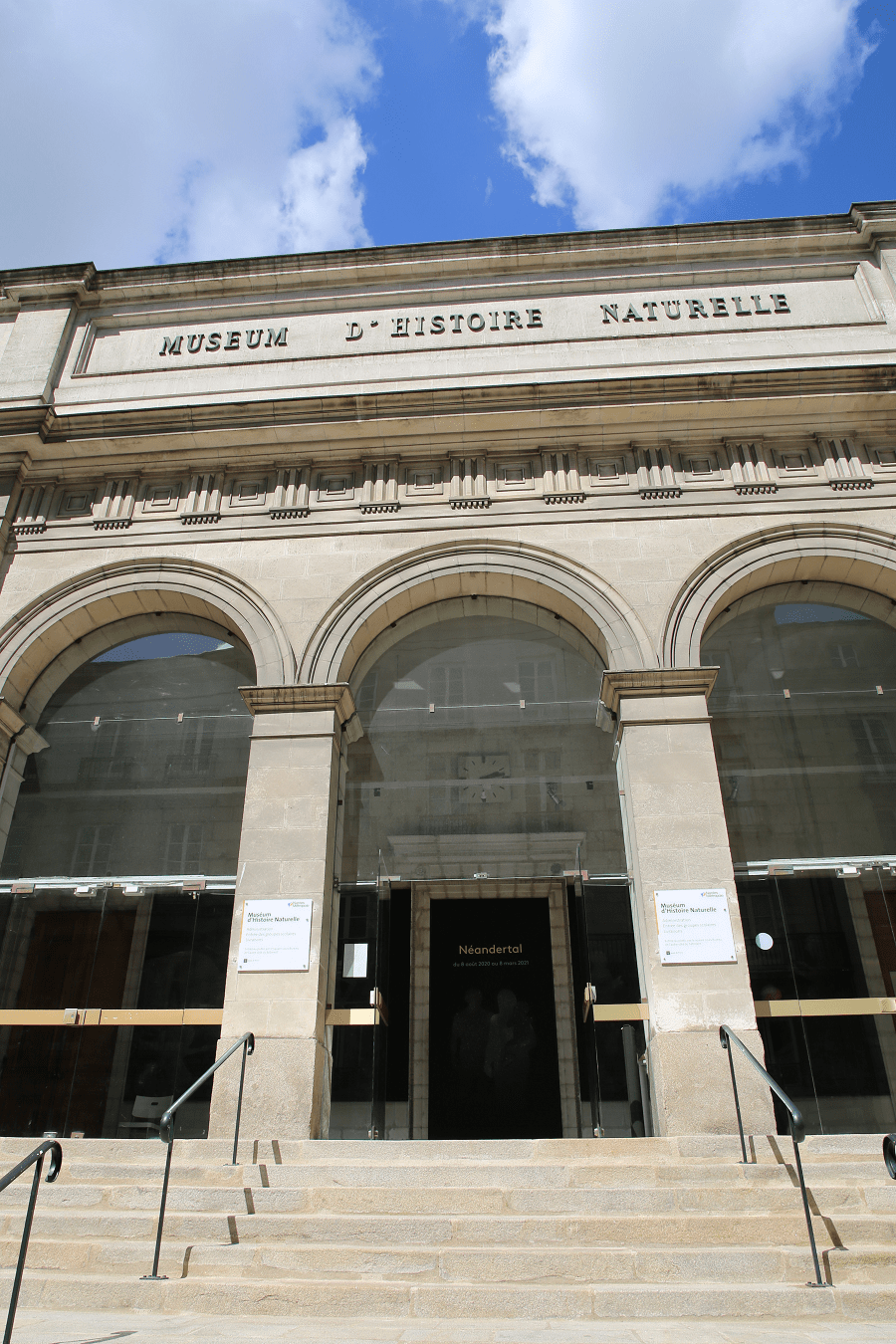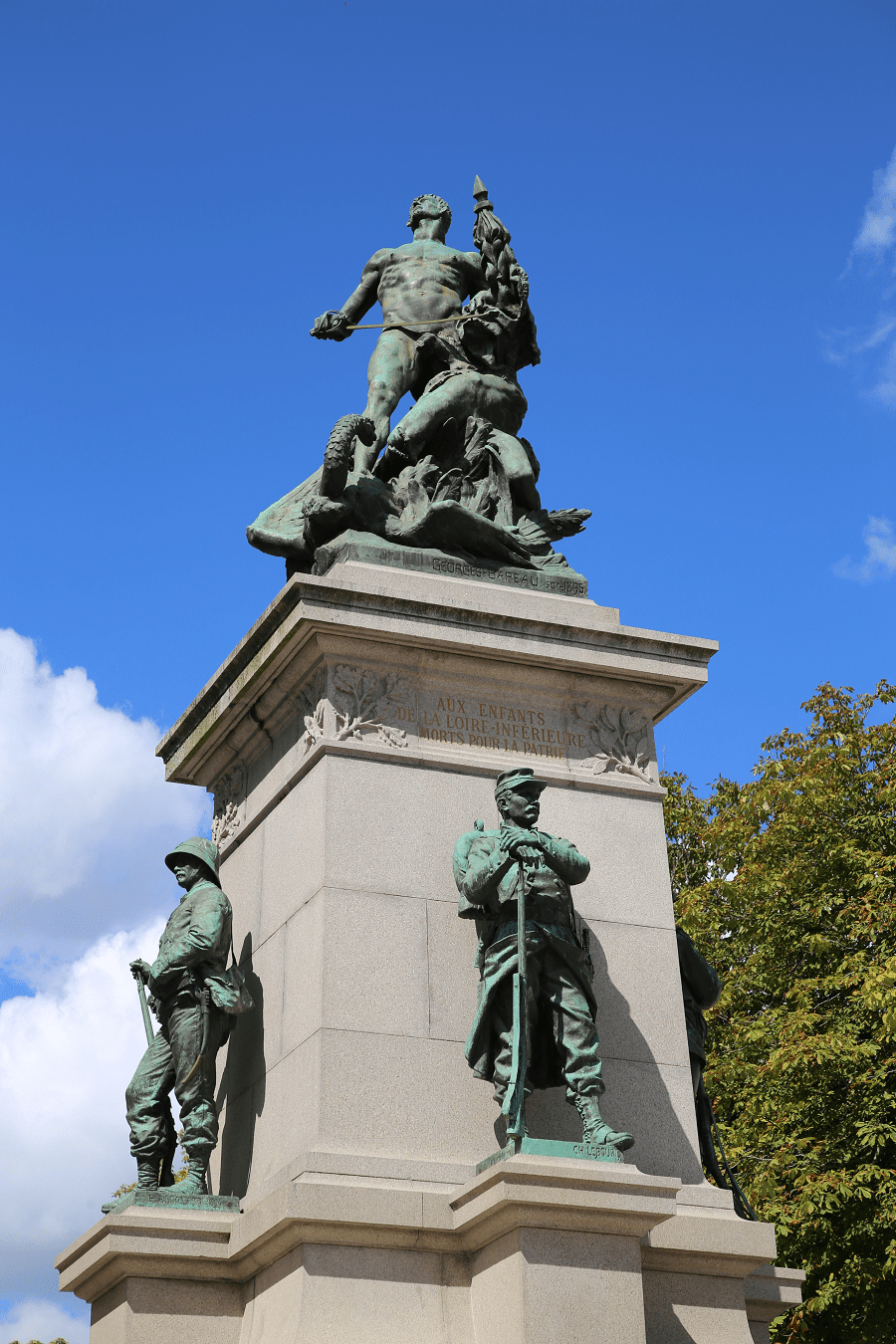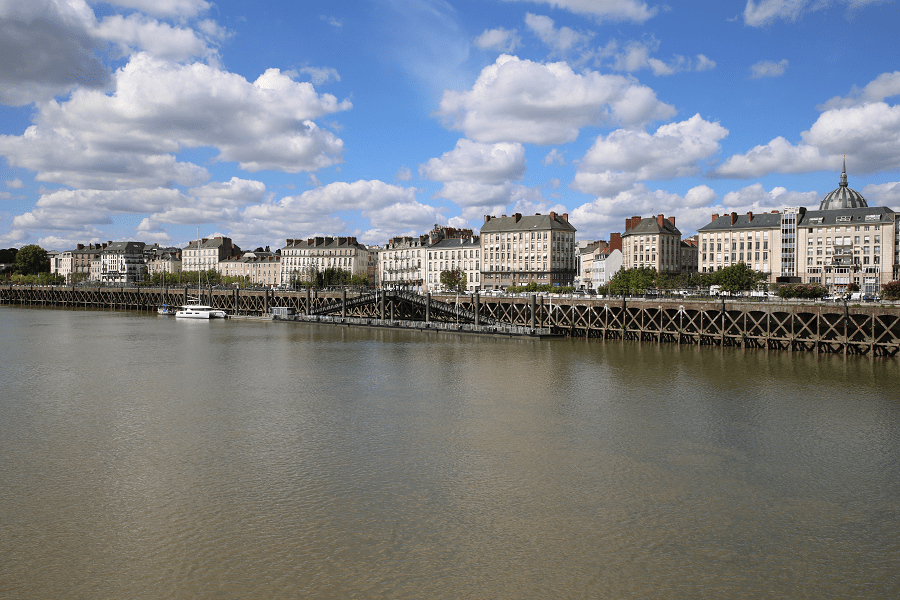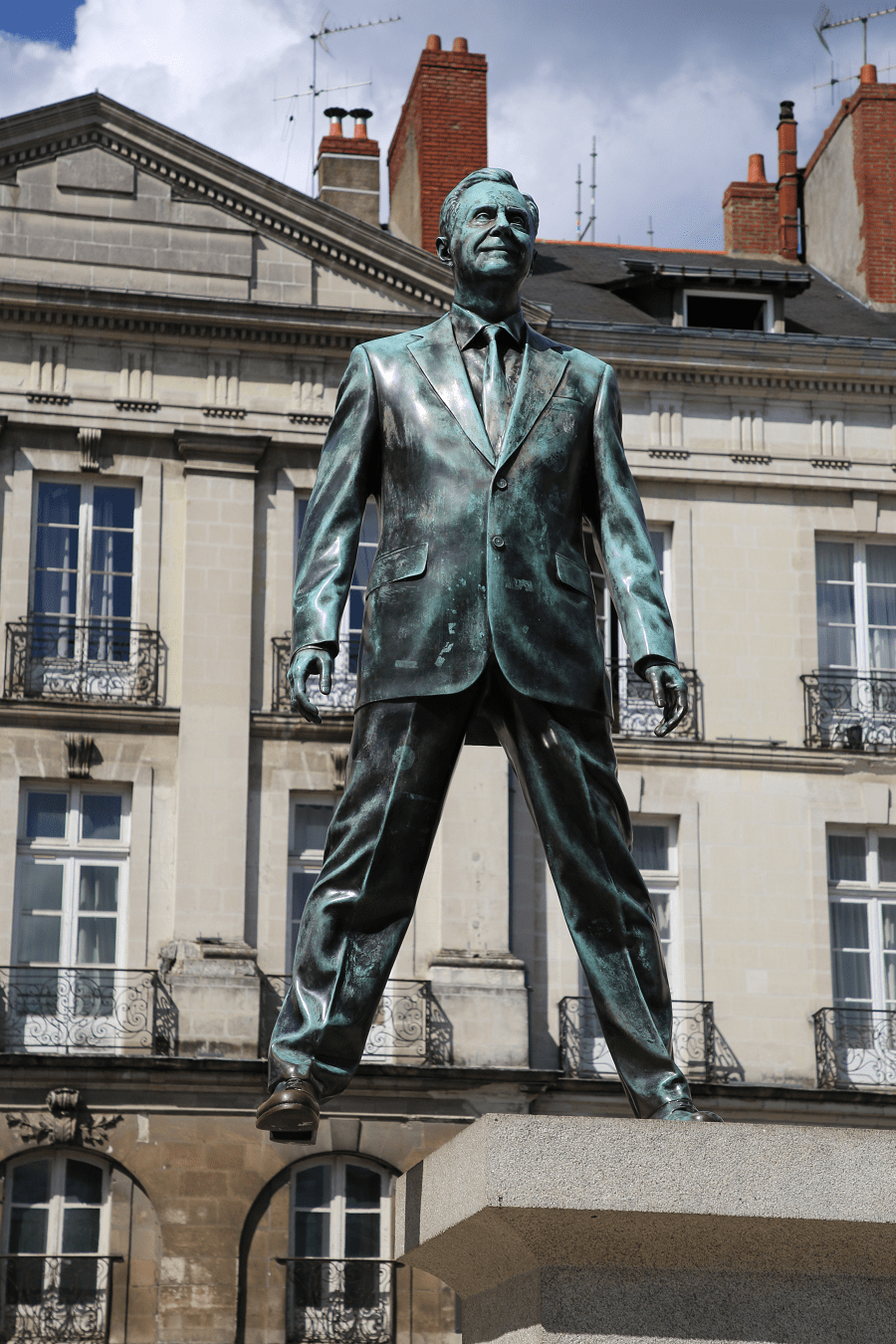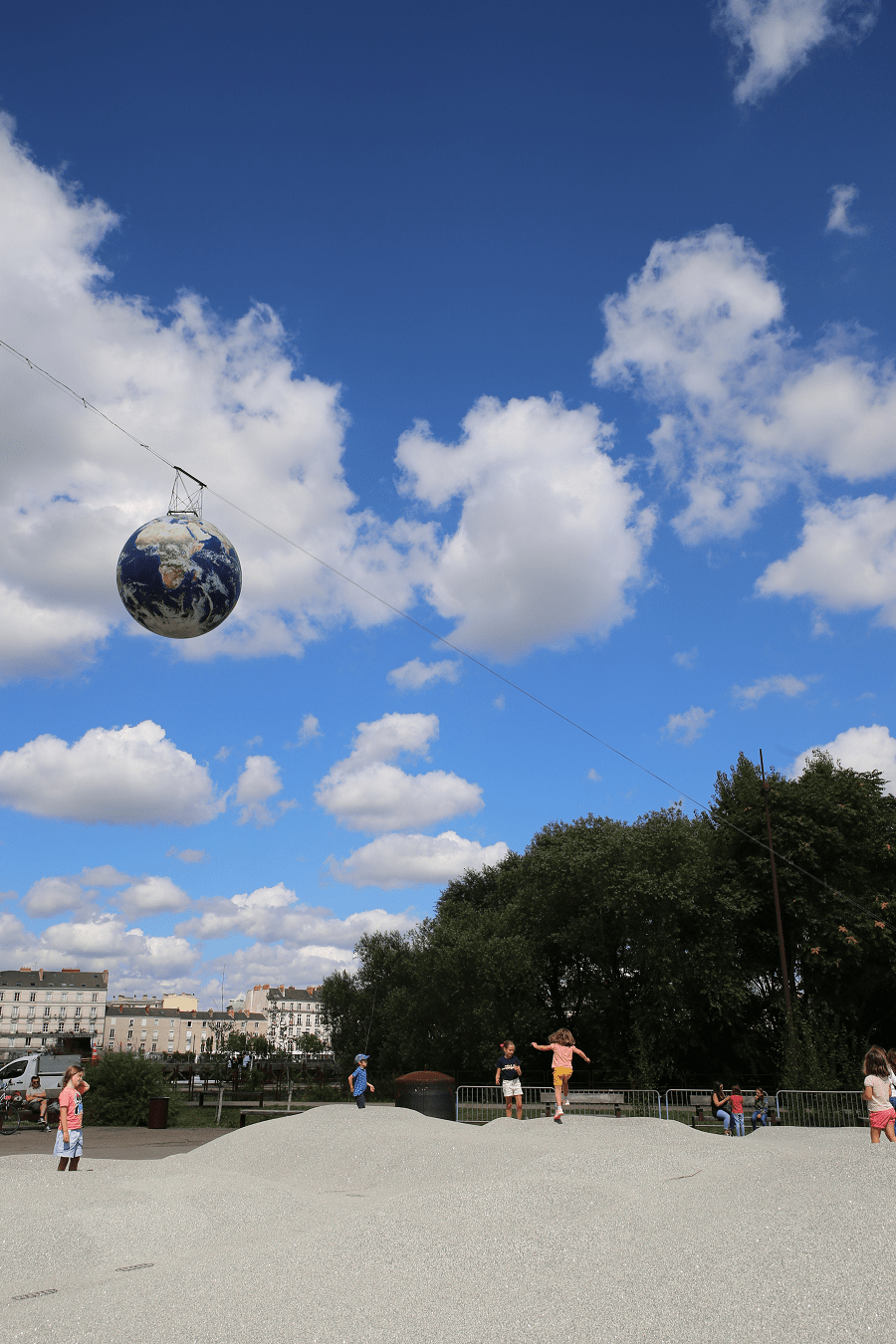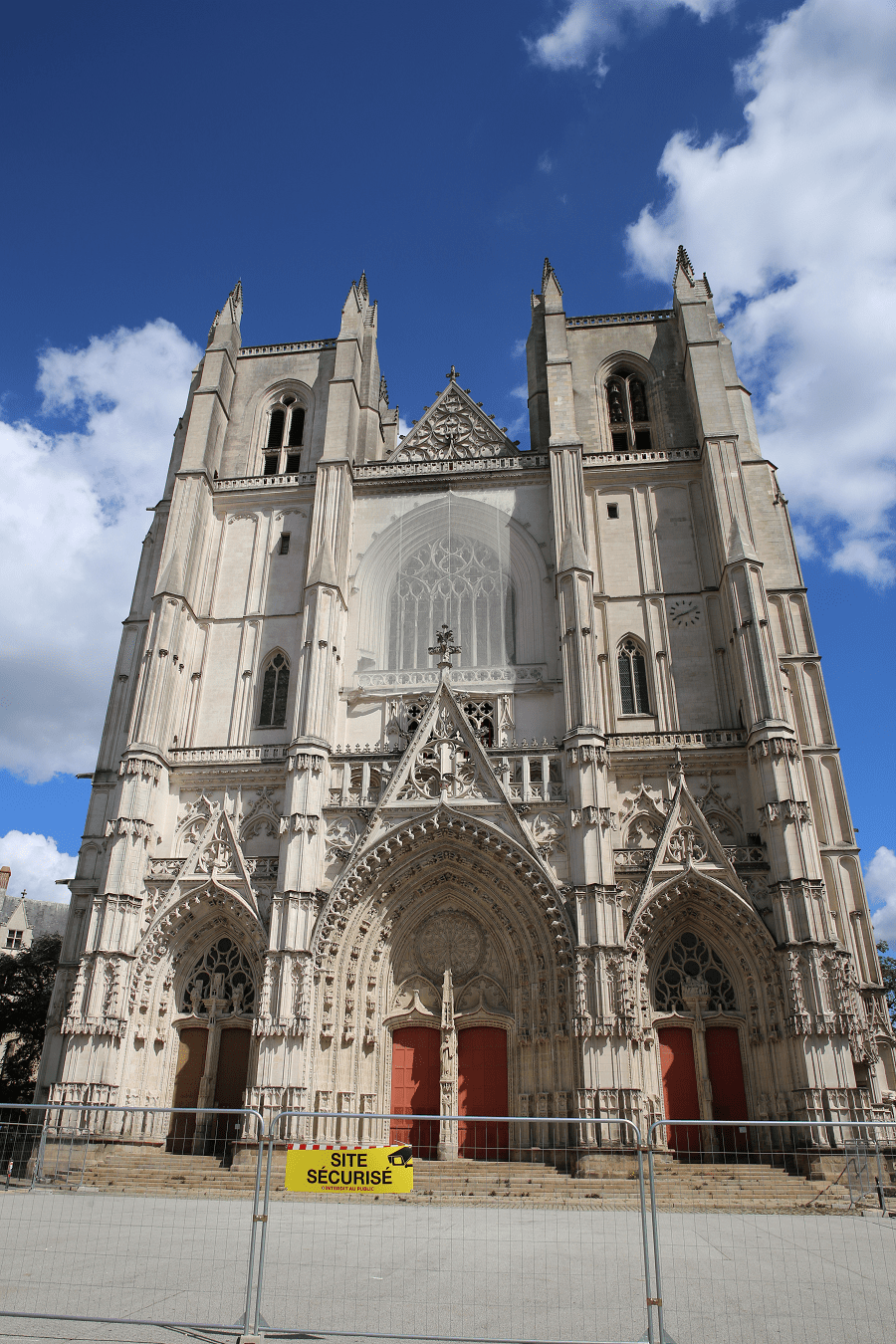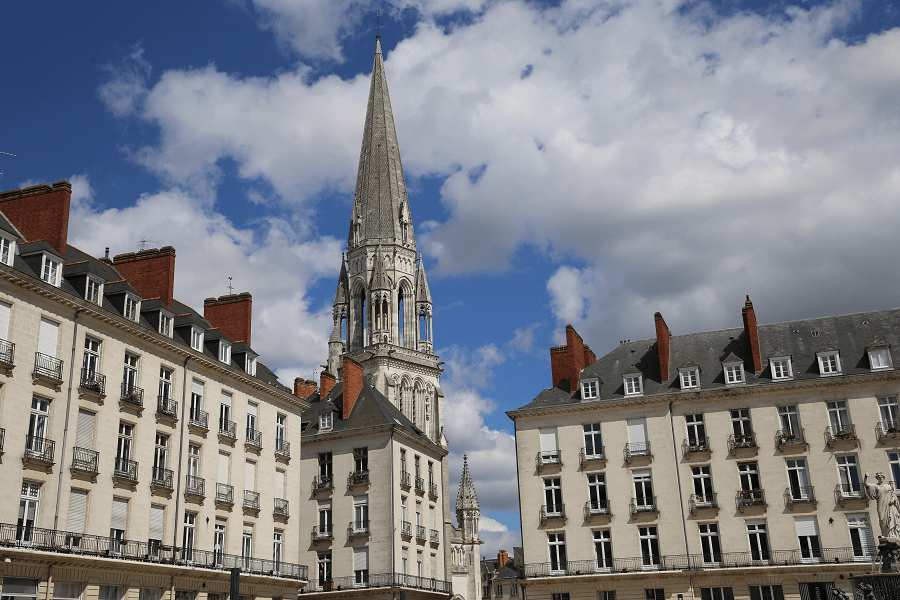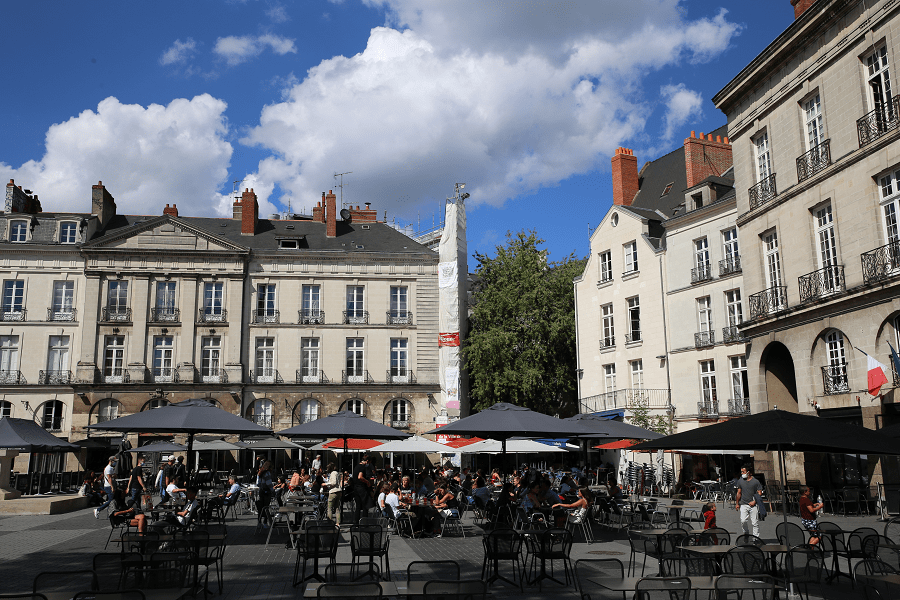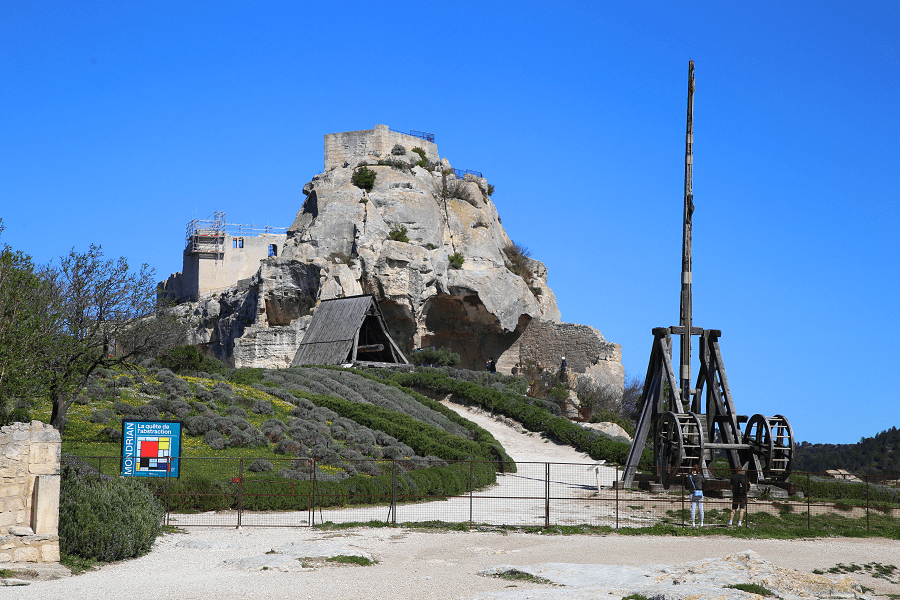Nantes (fr. Nantes) is a city in Loire-Atlantique on the Loire, 50 km from the Atlantic coast. The city is the sixth largest in France.
The city owes its development to its location on the banks of the Loire. After having been an important port site of the Metal Age, it became the capital of the Gallo-Roman city of Namnètes, the seat of a bishopric in the fifth century, then the capital of a Frankish county, illustrated by Roland’s semi-legendary personality. Support point of the Frankish kingdom against the push of the Bretons, it was conquered in 851 by Nominoë. Consequently, the history of the city is largely linked to Brittany, of which it became the ducal capital in the fifteenth century, when the construction of its cathedral began. However, the city lost its political pre-eminence in Brittany in favour of Rennes, after the integration of the duchy into the kingdom of France in the sixteenth century.
The following three centuries are marked by its importance in international trade—among others, in the slave trade, which reached its peak in the eighteenth century, Nantes being the first French slave port.
During the Revolution, the defence of Nantes was an essential stake in the Vendée war. After this difficult period, the city does not know a return to the former prosperity; but, during the nineteenth and the beginning of the twentieth century, its industrial development was remarkable in western France.
In the twentieth century, the urban landscape was marked by the filling in of many rivers that divided the city, then by bombardments during the Second World War.
In the years 1950-1960, the Nantes working class played a notable role in the French social movement (1955, 1968).
It has been a university town since 1962. At the end of the twentieth century, it underwent deindustrialization, and became a pole of the tertiary sector. However, port infrastructure remains an important element of the large seaport of Nantes-Saint-Nazaire, one of the major French ports.
Its rich architectural heritage, largely inherited from the eighteenth and nineteenth centuries, labelled Nantes as a city of art and history, despite the completion of major urban planning work, especially on the island of Nantes.
The image of the city is the combination of these different eras, symbolized by the castle of the Dukes of Brittany, the Feydeau island, the Pommeraye passage, the LU tower or the sporting exploits of FC Nantes.
Presented as “the most pleasant city in Europe” by Time magazine in 2004 and “best city in France to work in” by the news site The Local in 2018 and by the magazine L’Express in 2017, Nantes received the European Green Capital Prize in 2013 and the European Capital of Innovation Prize in 2019.
In 2020, the Globalization and World Cities Research Network ranked Nantes as a Gamma world city. It is the fourth highest-ranking city in France, after Paris, Lyon and Marseille. The Gamma category includes cities such as Algiers, Orlando, Porto, Turin and Leipzig. Nantes also has been praised for its quality of life.
Nantes is also the second most bicycle-friendly city in France and the 2015 bike capital, which makes the city more attractive for tourists.
Tourism and main sights
Nantes’ cityscape is primarily recent, with more buildings built during the twentieth century than in any other era. The city has 122 buildings listed as monuments historiques, the nineteenth-ranked French city. Most of the old buildings were made of tuffeau stone and cheaper schist.
Nantes belongs to the network of Cities and Countries of Art and History, led by the Ministry of Culture and local authorities, and which bring together cities concerned with preserving and promoting their heritage. Thus, in 1972, the city delimited a protected area between the quai de la Fosse and the Saint-Pierre and Saint-André courtyards and including in particular the castle, the cathedral, the Bouffay district, the Feydeau island, the place Royale and the Graslin district. With 126 hectares, it is one of the most important protected areas of France.
The mayor, Jean-Marc Ayrault (1989 – 2012), wanted to include the city and the Loire estuary as a UNESCO World Heritage Site.
TOP 5 main sights must see in Nantes:
- The Cathedral of St. Peter and St. Paul of Nantes. The construction of the cathedral has spanned over 500 years.
- The château des Ducs de Bretagne (The Castle of the Dukes of Brittany) is Nantes most important historical monument and one of the main touristic attractions
- Lu tower (“tour Lu”). It was part of the former factory that produced the famous Nantes biscuits, the “BN” (“Biscuit Nantais”)
- The Tour Bretagne with its elevator to the 32nd floor with 360 degree panorama over the whole city of Nantes
- Île de Nantes and its modern architecture
Museums
The Fine Art Museum is the city’s largest. Opened in 1900, it has an huge collection ranging from Italian Renaissance paintings to contemporary sculpture. The museum includes works by Tintoretto, Brueghel, Rubens, Georges de La Tour, Ingres, Monet, Picasso, Kandinsky and Anish Kapoor.
The Historical Museum of Nantes, in the castle, is dedicated to local history and houses the municipal collections. Items include paintings, sculptures, photographs, maps and furniture displayed to illustrate major points of Nantes history such as the Atlantic slave trade, industrialisation and the Second World War.
The Dobrée Museum, closed for repairs as of 2017, houses the departments archaeological and decorative-arts collections. The building is a Romanesque Revival mansion facing a 15th-century manor.
The Natural History Museum of Nantes is one of the largest of its kind in France. It has more than 1.6 million zoological specimens and several thousand mineral samples.
The Machines of the Isle of Nantes, opened in 2007 in the converted shipyards, has automatons, prototypes inspired by deep-sea creatures and a 12-metre-tall, walking elephant. With about 620,000 visitors each year, the Machines is the most-visited non-free site in Loire-Atlantique.
Smaller museums include the Jules Verne Museum (dedicated to the author, who was born in Nantes) and the Planetarium.
The HAB Galerie, located in a former banana warehouse on the Loire, is Nantes’ largest art gallery. Owned by the city council, it is used for contemporary-art exhibitions.
Parks
Nantes obtained Four Flowers with Grand Prix distinction in the 2006 and 2007 winners of the towns and villages in bloom competition. The Nantes Green Space and Environment Service (SEVE) lists 95 parks, gardens, courtyards, squares and squares under its responsibility.
Created in 1807 and opened to the public in 1865, the Jardin des Plantes de Nantes is designed according to the criteria in vogue in the nineteenth century. The tradition of mosaiculture is maintained there, the floral decoration is embellished with a large number of waterfalls and water features. In this 73,280m2 park, officially called the botanical garden, we find a collection of epiphytes, another of cacti and succulents, a presentation of the flora of the Armorican Massif, a collection of camellias, and finally the oldest tree in the garden, the Hector magnolia, planted in 1807 at the age of 16.
The Japanese garden on the island of Versailles offers a landscape of rockeries, waterfalls, surrounded by bamboo, Japanese cherry trees, rhododendrons, camellias and bald cypresses.
NANTES PASS
Access to 30 attractions including “Carrousel des Mondes Marins”.
Example of a 24h stay: 24-hour TAN ticket (5.80 €), castle of the dukes of Brittany museum + audioguide (10 €), cruise on the Erdre (13.50 €), city tour bus (12 €), Carrousel des Mondes Marins (8.50 €) for a total of 49.60 € – All these services are included in the Pass Nantes for 26 €.
Cuisine and restaurants
Local fishing ports offer shrimp and sardines, and eels, lampreys, zander and northern pike are caught in the Loire. Local vegetables and fish are widely available in the city’s eighteen markets, including the Talensac covered market (Nantes’ largest and best-known). Although local restaurants tend to serve simple dishes made with fresh local products, exotic trends have influenced many chefs in recent years.
One of the specialties offered on the menu of some local restaurants is Nantes lard; a preparation composed of rind, liver, lung and pork chops tasted preferably with Muscadet.
Another specialty is the Challans duck with Muscadet, known as “Nantes duck”; a preparation based on duck raised in the Breton marshes and cooked with a Muscadet sauce and apples cooked in salted butter.
White butter, also called “Nantes butter”, is a sauce typical of the region invented by Clémence Lefeuvre, cook of the Marquis de Goulaine, at the beginning of the twentieth century. It is a reduction of grey shallots chopped in vinegar and muscadet then whipped in butter, which accompanies river fish (pike perch or pike) or marine fish (saithe or shad).
There are two Michelin star restaurants in Nantes:
LuluRouget, 4 place Albert-Camus, 32 – 95 EUR • Modern Cuisine (1 star)
L’Atlantide 1874 – Maison Guého, 5 rue de l’Hermitage, 45 – 130 EUR • Modern Cuisine (1 star)
Shopping
Rue Crébillon, which still remains a shopping Mecca in Nantes, get together many famous brands. Just steps away, Rue Crébillon will lead you to Passage Pommeraye.
Passage Pommeraye is a shopping arcade in the city center. This mixed passage made up of shops and homes was built on three levels from 1841 to 1843. It is organized around a monumental central staircase and is adorned with medallions and statues, works by Guillaume Grootaërs and Jean Debay. The passage was classified as a historical monument in 1976.
Transport and how to get to?
Nantes-Atlantique airport is located in the south-west of the city, straddling the territory of the municipalities of Bouguenais and Saint-Aignan-Grandlieu. In 2019, the traffic was around 7 million passengers.
Nantes is served by the SNCF network in order to link it to the rest of France. Nantes station is a destination for TGV Atlantique from Paris, but also from Lyon, Marseille, Lille or Strasbourg.
Shortest distance by car:
From La Baule-Escoublac: 1 h 6 min (77.3 km) via N171 and N165
From Le Croisic: 1 h 22 min (88.5 km) via N171 and N165
From Guérande: 1 h 10 min (78.7 km) via N171 and N165
From Le Pouliguen: 1 h 16 min (84.1 km) via N171 and N165
From Pornichet: 1 h 5 min (71.5 km) via N171 and N165
From Saint-Nazaire: 1 h 4 min (62.8 km) via N171 and N165
From Pornic: 52 min (50.0 km) via D751
From Saint-Jean-de-Monts: 1 h 6 min (74.5 km) via D117
From Saint-Gilles-Croix-de-Vie: 1 h 14 min (80.9 km) via D117
From Bretignolles-sur-Mer: 1 h 24 min (88.4 km) via D117
From Noirmoutier-en-l’Île: 1 h 32 min (92.1 km) via D117
From Thouars: 1 h 40 min (121 km) via D759 and N249
From Saumur (tolls): 1 h 43 min (156 km) via A11
From Les Sables-d’Olonne (tolls): 1 h 26 min (122 km) via A87 and A83
From Jard-sur-Mer (tolls): 1 h 28 min (116 km) via A83
From Cognac (tolls): 2 h 44 min (249 km) via A83
From Angoulême (tolls): 3 h 3 min (276 km) via A83
From Pons (tolls): 2 h 31 min (259 km) via A10 and A83
From Eauze (tolls): 4 h 44 min (487 km) via A10 and A83
From La Rochelle (tolls): 1 h 55 min (137 km) via A83
From Rochefort (tolls): 2 h 9 min (167 km) via A83
From Le Château-d’Oléron (tolls): 2 h 40 min (199 km) via A83
From Saint-Palais-sur-Mer (tolls): 2 h 49 min (208 km) via A83
From Soulac-sur-Mer (tolls, ferry): 3 h 40 min (222 km) via A83
From Niort (tolls): 1 h 38 min (143 km) via A83
From Saintes (tolls): 2 h 20 min (237 km) via A10 and A83
From Arcachon (tolls): 4 h 8 min (413 km) via A10 and A83
From Fouras (tolls): 2 h 5 min (161 km) via A83
From Châtelaillon-Plage (tolls): 1 h 57 min (148 km) via A83
From Royan (tolls): 2 h 49 min (206 km) via A83
From Biarritz (tolls): 5 h 19 min (546 km) via A63, A10 and A83
From Bayonne (tolls): 5 h 8 min (532 km) via A63, A10 and A83
From Dax (tolls): 4 h 53 min (494 km) via A10 and A83
From Lourdes (tolls): 5 h 27 min (591 km) via A65, A10 and A83
From Pau (tolls): 5 h 10 min (557 km) via A65, A10 and A83
From Périgueux (tolls): 4 h 11 min (440 km) via A10 and A83
From Bordeaux (tolls): 3 h 28 min (347 km) via A10 and A83
From Toulouse (tolls): 5 h 28 min (585 km) via A62, A10 and A83
From Carcassonne (tolls): 6 h 10 min (676 km) via A62 and A10
From Monaco (tolls): 10 h 45 min (1,165 km) via A62
From Nice (tolls): 10 h 35 min (1,143 km) via A62
From Cannes (tolls): 10 h 18 min (1,116 km) via A62
From Saint-Tropez (tolls): 10 h 17 min (1,089 km) via A62
From Aix-en-Provence (tolls): 8 h 55 min (974 km) via A62
From Nîmes (tolls): 7 h 59 min (873 km) via A62
From Marseille (tolls): 8 h 58 min (986 km) via A62
From Avignon (tolls): 8 h 16 min (913 km) via A62
From Montpellier (tolls): 7 h 30 min (825 km) via A62
From Béziers (tolls): 6 h 55 min (763 km) via A62
From Perpignan (tolls): 7 h 4 min (789 km) via A62
From Narbonne (tolls): 6 h 40 min (733 km) via A62
From Andorra (tolls): 7 h 49 min (767 km) via A62
Main information
Area: 65.20 sq. km
Population: 310 000
Languages: French
Currency: euro
Visa: Schengen
Time: Central European UTC +1
GPS coordinates: : 47°13′05″N 1°33′10″W




